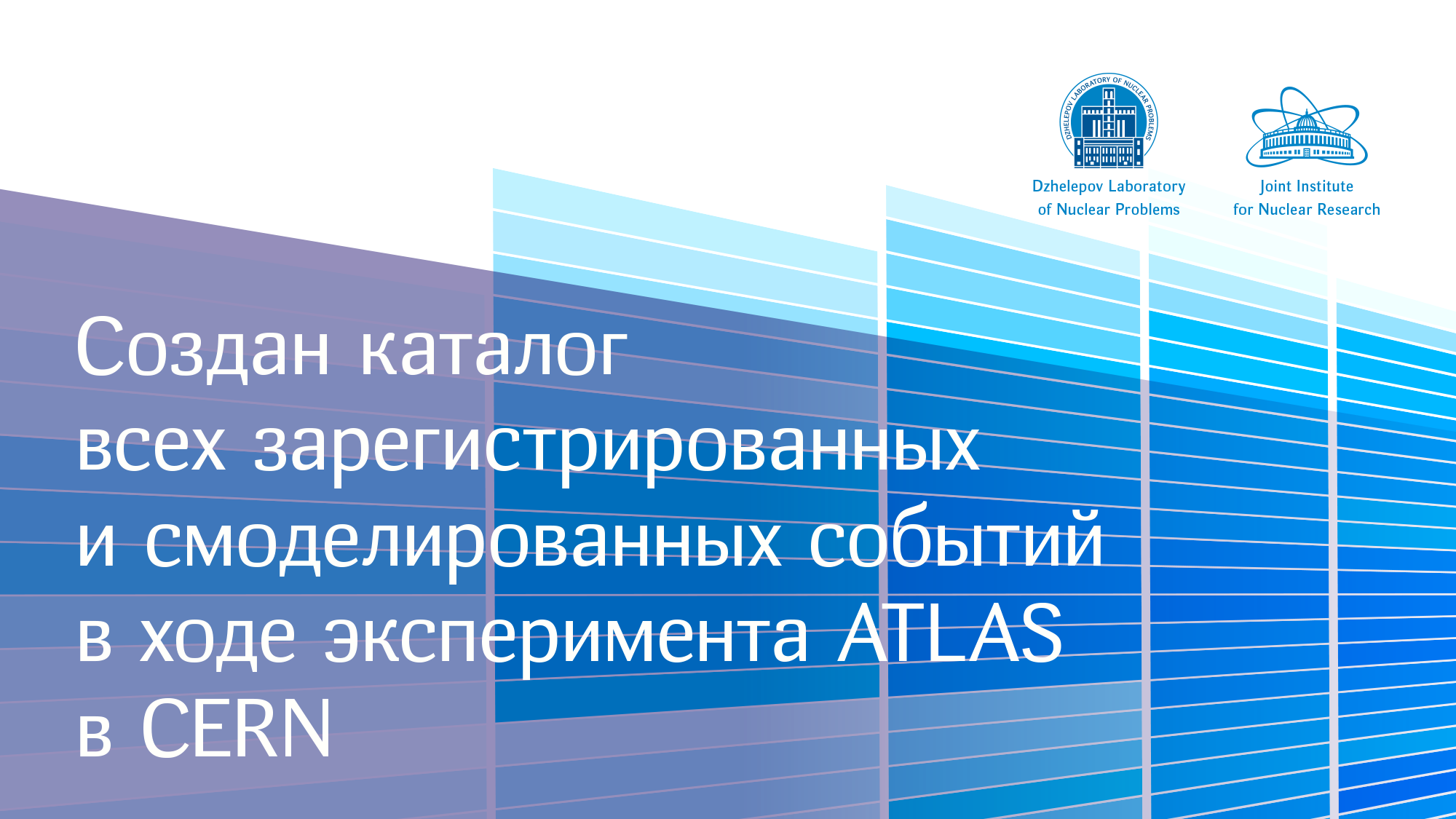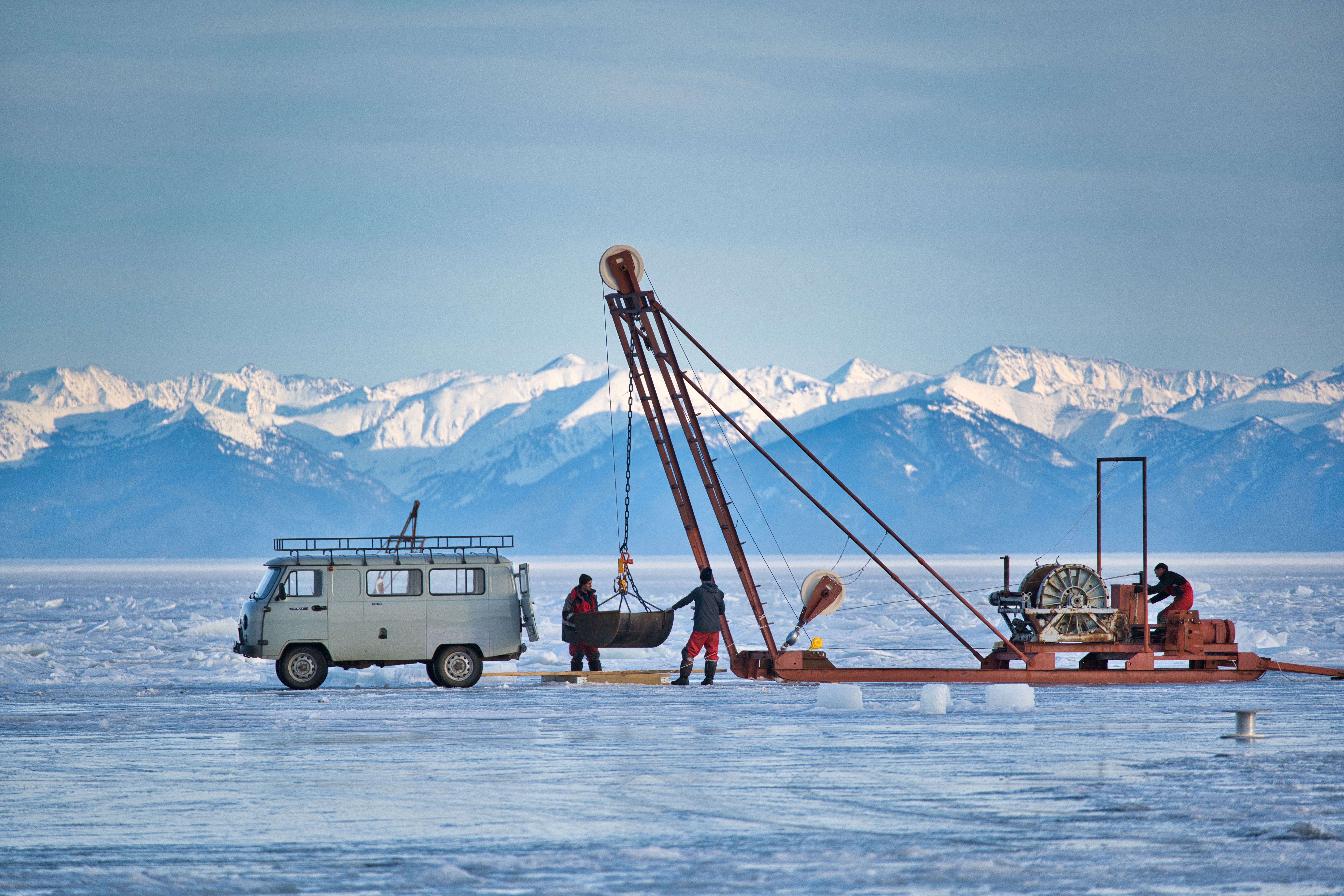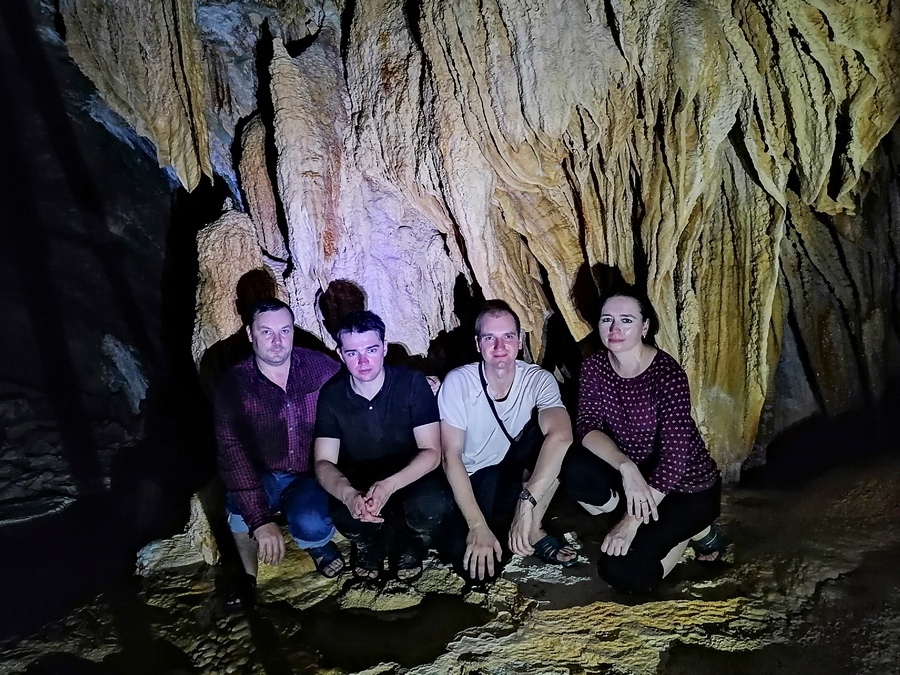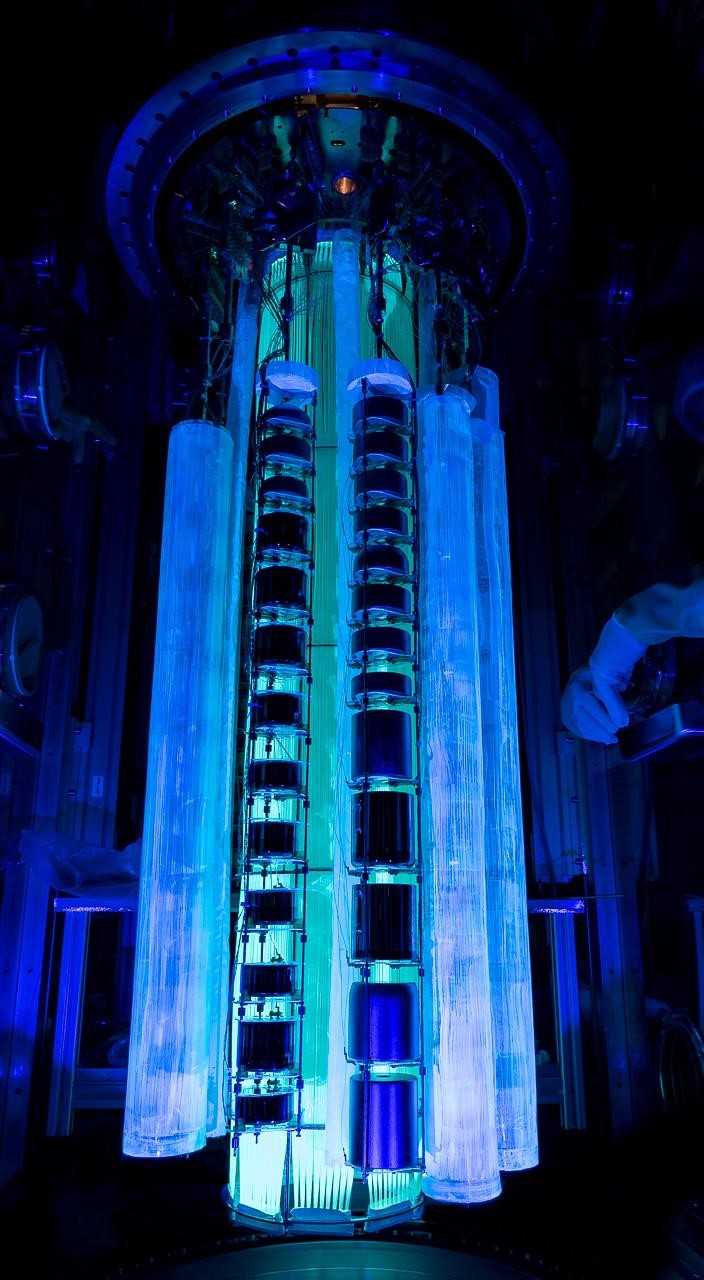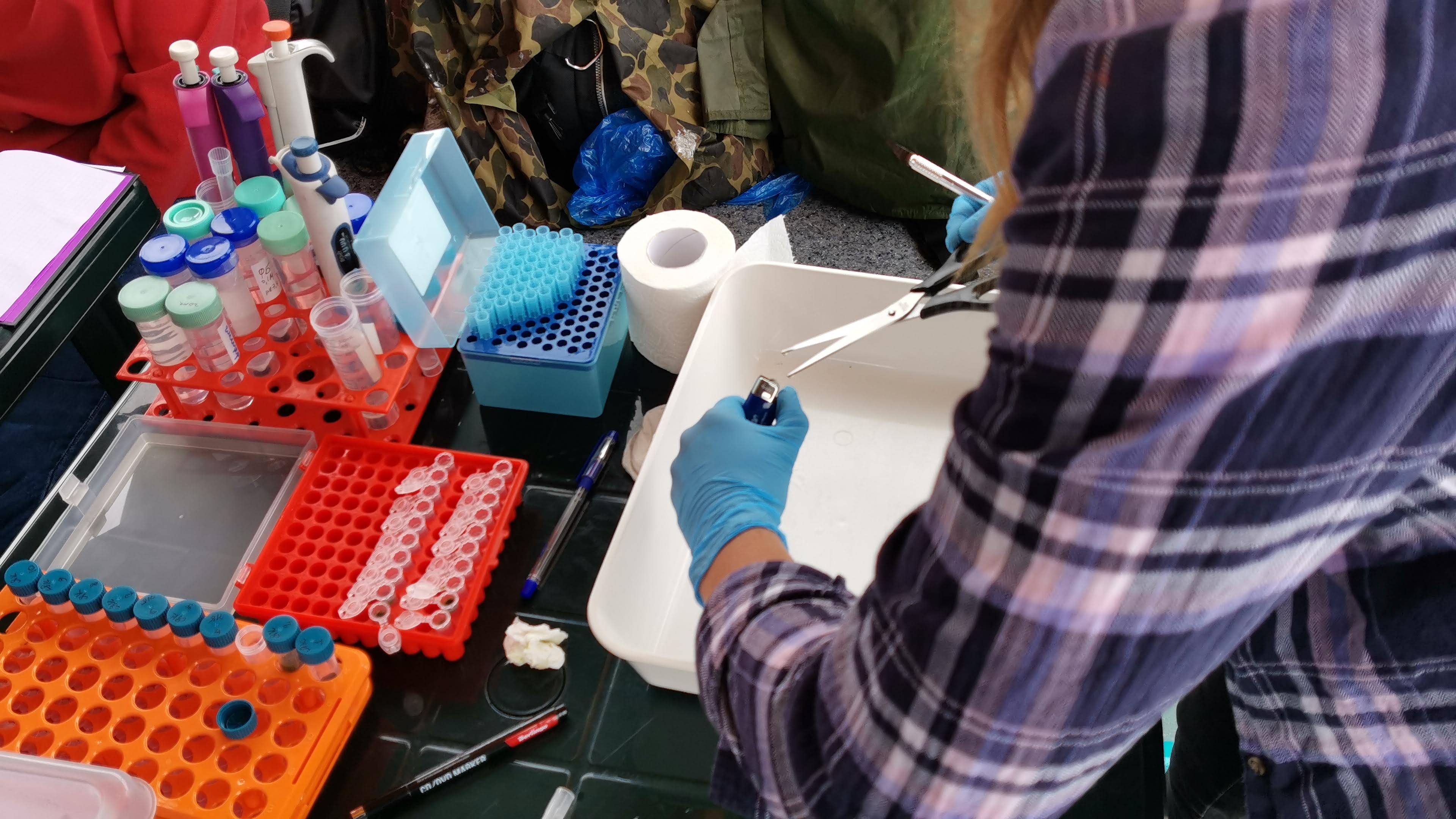Novel Structural Material for Dark Matter Particle Detectors
An article was published in the journal Materials about development and manufacture of a pilot batch of the ultra-low background structural material for production of new-generation detectors to search for weakly interacting dark matter particles. The material obtained on the basis of polymethylmethacrylate and rare-earth metal gadolinium almost does not produce radiation background and can slow down and efficiently absorb neutrons. The team of scientists from the Mendeleev University of Chemical Technology (MUCT), Skobeltsyn Institute of Nuclear Physics of Moscow State University (SINP of MSU), Belgorod State University (BSU) and Dzhelepov Laboratory of Nuclear Problems (DLNP) has dealt with the task for several years. The research was performed within the international DarkSide-20k experiment, one of the largest projects on the dark matter particle search. The detector is due to start its operation in the underground low-background laboratory Gran Sasso in Italy in 2025−2026.
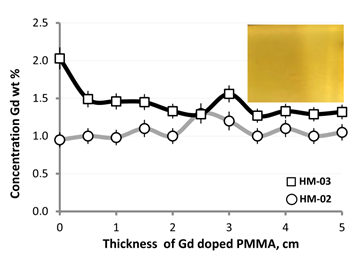
 Figure 1. Gadolinium distribution over the thickness in samples of the novel hybrid material. A photo at top right depicts a cut of one of the samples illustrating uniformity of gadolinium distribution in polymethylmethacrylate.
Figure 1. Gadolinium distribution over the thickness in samples of the novel hybrid material. A photo at top right depicts a cut of one of the samples illustrating uniformity of gadolinium distribution in polymethylmethacrylate.
The future DarkSide-20k detector is a facility of the second generation of DarkSide, an experiment on dark matter detection. Dark matter is matter not involved in electromagnetic interactions, and it cannot be directly observed, but, as scientists assume, it might manifest itself in weak and gravitational interactions. Particularly, the dark matter presence in the Universe would explain observable gravitational lensing (effect of distortion of light from distant stars) and also the abnormally high rotating velocity of outer galaxy regions. The composition and nature of dark matter are still unknown – its particles are not detected. The most promising candidates for dark matter particles are weakly interacting massive particles (WIMPs).
Scientists are trying to detect such particles using their possible interactions with atomic nuclei of ordinary matter. To exclude signals from other processes, dark matter particle detectors are placed deep underground in low-radiation background conditions, and their targets are enclosed in multilayer active and passive shielding. The main source of background events are neutrons which can easily imitate dark matter particle scattering off working medium nuclei. The configuration of the DarkSide-20k detector required development of the novel structural material for walls of inner buffer layers (veto) intended for reduction in the neutron background level in the argon target. The novel hybrid material is to slow down neutrons and absorb them simultaneously emitting gamma quanta to mark background events.
The search for rare processes sets an extremely high requirement for neutron detection efficiency. The total neutron background in the sensitive target area after all data processing procedures during 10−15 years of operation should not exceed one event. This protection level can be reached only by maximal suppression of intrinsic material radioactivity arising from the presence of long-lived uranium and thorium isotopes initiating the (α,n) reactions. Thus, the requirement of the ultra-low background material is well-founded.
The external coat of the DarkSide-20k detector will be a cryostat, analogous to that of the ProtoDUNE experiment. All internal materials must keep their mechanical properties at the temperature of 87 K (−186 ˚C).
To meet all the above-mentioned requirements, a hybrid material on the basis of polymethylmethacrylate (better known as acrylic resin) should be developed with addition (better evenly across the volume) of some gadolinium compound. Computations showed that a lot of pure gadolinium should be added, approximately 1-2% by mass. The detector configuration involves a plastic structure with gadolinium with the total mass of 12 t, which should be made up of 1 x 1 x o.o5 m plates. That means that the team of scientists faced the challenge not just to elaborate a material with definite properties but create a technology which could be scaled to the industrial production level. Since the material was not intended to be used as scintillator, it was not required to be transparent, which facilitated the work. Physically, it was only necessary to have neutrons captured by nuclei which resulted in gamma quanta easily detected in buffer argon layers.
The objective was successfully achieved. Ultra-pure gadolinium acetylacetonate and methylmethacrylate were obtained and then successfully mixed, with this true solution being thermally polymerized. Note that the unprecedented levels of purity in uranium and thorium, 0.011 ppb and 0.016 ppb, respectively, were achieved and guaranteed by the technology. The above-mentioned values are precision limits of the mass spectrometry method used.
“To date, experimental samples passed all the necessary tests. The infrastructure for manufacturing this novel structural material on the industrial scale is being created. The material has the potential for being applied to basic research as well to different nuclear facilities of general purposes and to devices intended for operation in extreme weather conditions, e.g., in winter or within the Arctic Circle. Noteworthy are the ideas and research management of our colleagues Igor Khristoforovich Avetissov (MUCT) and Alexander Sergeevich Chepurnov (SINP of MSU),” – remarked one of the authors, a researcher from the Dzhelepov Laboratory of Nuclear Problems, Candidate of Physics and Mathematics, Maxim Gromov.
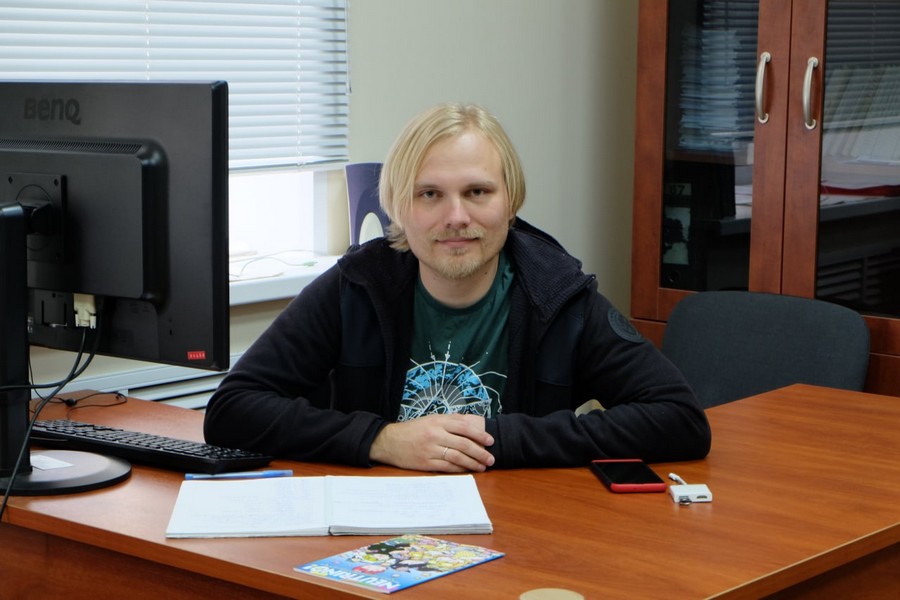 Maxim Gromov | Photo by Irina Sidorova
Maxim Gromov | Photo by Irina Sidorova
Development of the ultra-low background structural material for the neutron veto is an important stage in the DarkSide-20k detector design. It is clear already now that the project will develop further, with the even larger Argo facility in sight, which would permit covering almost the entire observable area of dark matter particle parameters. The ultra-low background structural material capable of keeping its properties at cryogenic temperatures and providing an efficient neutron slowdown and capture is an indispensable condition for success of this experiment.


